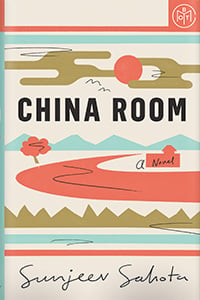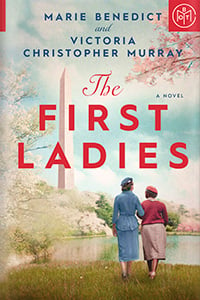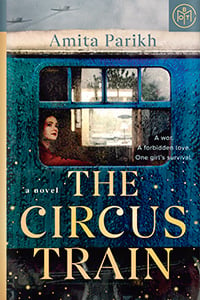

Historical fiction
China Room
by Sunjeev Sahota
Quick take
A continent and decade spanning story about the ways we fight to live on our own terms in a world that has other plans.
Good to know
Emotional
Nonlinear timeline
International
Literary
Synopsis
Mehar, a young bride in rural 1929 Punjab, is trying to discover the identity of her new husband. Married to three brothers in a single ceremony, she and her now-sisters spend their days hard at work in the family’s “china room,” sequestered from contact with the men—except when their domineering mother-in-law, Mai, summons them to a darkened chamber at night. Curious and strong willed, Mehar tries to piece together what Mai doesn’t want her to know. From beneath her veil, she studies the sounds of the men’s voices, the calluses on their fingers as she serves them tea. Soon she glimpses something that seems to confirm which of the brothers is her husband, and a series of events is set in motion that will put more than one life at risk. As the early stirrings of the Indian independence movement rise around her, Mehar must weigh her own desires against the reality—and danger—of her situation.
Spiraling around Mehar’s story is that of a young man who arrives at his uncle’s house in Punjab in the summer of 1999, hoping to shake an addiction that has held him in its grip for more than two years. Growing up in small-town England as the son of an immigrant shopkeeper, his experiences of racism, violence, and estrangement from the culture of his birth led him to seek a dangerous form of escape. As he rides out his withdrawal at his family’s ancestral home—an abandoned farmstead, its china room mysteriously locked and barred—he begins to knit himself back together, gathering strength for the journey home.
Partly inspired by award-winning author Sunjeev Sahota’s family history, China Room is at once a deft exploration of how systems of power circumscribe individual lives and a deeply moving portrait of the unconquerable human capacity to resist them.
Free sample
Get an early look from the first pages of The China Room.
Why I love it
Tessa Hadley
Author, Late in the Day
When I scan down the first page of a new book, I’m always looking out for warning signs—a slack sentence or a cliché, fake solemnity, cheap tricks, overwriting. So what bliss when from time to time the writing on that first page pushes back at me and I’m carried out of myself, into a new world. This is how I felt when I picked up my copy of Sunjeev Sahota’s China Room. The material was entirely fresh and new, the writing economical and elegant.
And—what a compelling story. Three teenage girls in India are married to three brothers, but none of them knows which of the three is actually her husband. Mehar is determined to find out which one of the men visits her at night in the dark, in the China Room. She tries putting different spices in the brothers’ food—then she sees one of them carrying a rope of pearls, which end up under her pillow, to help her conceive. Now she believes she’s sure.
Confusion and passion follow—and high drama. It sounds like a fairy tale, but it reads as breath-taking realism. And running alongside this story from the past is the present day tale of a boy from the UK who’s returned to his family in India, to be cured of his heroin addiction—we come gradually to see the connection between these two parts of this tender and enthralling book.






































































